System Buyers Guide: PCs for Under $1000
by Wesley Fink on December 29, 2008 3:00 AM EST- Posted in
- Guides
AMD Budget
Leaving the entry-level sector behind, and with a budget of up to $1000, our options increase significantly. Our aim here is to provide a configuration that allows for a nice balance of performance at stock speeds. This doesn't mean you have to spend the entire $1000 though, as prices have dropped in the past year and performance for the dollar has definitely increased. In fact, both budget systems are under $850 complete, giving you the option to increase graphics power or go for a larger monitor (or both) and still be around $1000.
The assembled system is balanced for a wide variety of computing tasks, but final tweaks can tilt it toward gaming or graphics for example, if that is what you aim for. Generally we consider PC gaming rigs to begin at the next category, or the low end of midrange, but adding a more powerful graphics card and a larger monitor will definitely make one of these budget systems a good choice for entry gaming at around $1000. If that is your goal take a look at our Holiday 2008 GPU and Holiday 2008 Display guides for help in selecting a graphics card and display for your price point.
| AMD Budget PC | ||
| Hardware | Component | Price |
| Processor | Phenom 8750 Black Edition (Tri-core 2.4GHz 95W 3x512KB L2) |
$120 |
| Cooling | CPU Retail HSF | - |
| Video | Powercolor AX4830 512MD3-H Radeon HD 4830 | $85 |
| Motherboard | Biostar TForce TA790GX3 A2+ | $110 |
| Memory | Crucial Ballistix 4GB DDR2-800 Kit (BL2KIT25664AA80A) | $48 |
| Hard Drive | WD Caviar GP WD6400AACS 640GB | $85 |
| Optical Drive | Samsung 22X DVDRW/DL SH-S202G | $25 |
| Audio | Onboard | - |
| Case | Antec Three Hundred ATX Mid-Tower Case | $60 |
| Power Supply | OCZ ModXStream Pro OCZ400MXSP 400W ATX12V V2.2 Modular Active PFC Power Supply | $35 |
| Display | Acer X193W+BD 19" 5ms Widescreen LCD Monitor (1680x1050) | $130 |
| Speakers | Logitech R-20 12 Watts RMS 2.1 Multimedia Speaker | $18 |
| Input | Microsoft CA9-00001 PS/2 Standard Keyboard and Optical USB/PS2 Mouse - OEM | $16 |
| Operating System | Microsoft Vista Home Premium OEM | $99 |
| Bottom Line | $831 | |
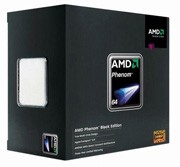 |
While the GPU is the most important factor in gaming performance, the CPU is also a factor - particularly below 1280x1024. To make sure the CPU is not a bottleneck now, or in the near future should you upgrade your PC, a Black Edition Phenom X3 is the CPU of choice. The Phenom 8750 Black Edition has an unlocked multiplier should you choose to overclock, which makes overclocking as simple as it gets. It is rated at 2.4GHz 95W at stock, with 3x512KB L2 cache.
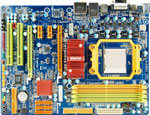 |
We've paired the Phenom 8750 Black Edition with the Biostar TForce TA790GX3 A2+, a perfect match for those looking to squeeze as much performance out of their money as possible. The Biostar is loaded with overclocking features, including integrated AMD HD 3300 graphics with an HDMI/DVI interface with 1080P HD support. This adds up to very decent performance using the onboard graphics. In addition to AM2+ support, Biostar claims future AM3 CPU support. Biostar includes 128MB DDR2 sideport memory for improved GPU performance, Realtek ALC 888 HD audio, Gigabit LAN, 16GB memory support, six 3Gb/s ports capable of RAID 0/1/10/5, 10 USB ports, two PCI-E x16 slots (dual x8 CrossFire), two PCI-E x1 slots, and two PCI slots. The BIOS caters to the casual overclocker and this board performs very well in a variety of tests. .
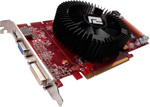 |
Graphics are provided by the PowerColor Radeon HD 4830. 4830 video cards are normally in the $110 to $130 price range, so $85 for an Radeon 4830 after rebate is an incredible value and allows the graphics to be kicked up to a higher level. At low to moderate resolutions (1024x768 to 1680x1050) gamers using this class of GPU hardware are all but guaranteed to be able to play with all the effects and high image quality options enabled. That makes the 4830 a good match to the other components in our Bargain systems.
We're going with the Ballistix 4GB DDR2-800 kit for $48. However, there are many memory options at great prices today. Quality DDR2-800 RAM from Corsair, OCZ, G.Skill, Mushkin, and GeIL are available on any of the major online retailers. Just be sure to look for RAM with timings of 4-4-4-12 - or even better with a little luck.
The hard drive receives a slight capacity upgrade to a 640GB Western Digital Caviar. If you'd prefer a longer warranty, look at Seagate, which includes a 5-year warranty on most of their drives for a few dollars more. The DVD burner remains the same Samsung 22X.
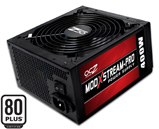 |
The case receives an upgrade with the selection of the well-regarded Antec Three Hundred and a bargain OCZ ModXStream Pro 400W power supply. OCZ power supplies have a great reputation for solid performance and good warranty support, and $35 after rebate is a great price for a quality power supply.
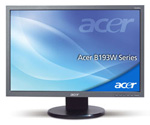 |
The LCD display was a bit of a conundrum. We selected the high resolution Acer X193W+BD for $130. Where else can you find a 19" monitor with the 1680x1050 resolution more common on a 22" screen? If you prefer a larger screen you can find a 22" widescreen for just $40 more, but the resolution will be the same.
If you plan to do a lot with 1080P HD you should consider a monitor that will support the 1080P resolution of 1920x1080. Generally this is the resolution expected of 24" LCD Monitors, which start at around $300. That is a great price compared to the $1000 of just a couple of years ago, but there are even cheaper options available.
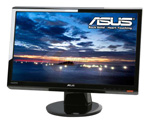 |
The new class of 21.5" monitors feature a true 1080P resolution and we found the Acer H213H 21.5" HDMI 16:9 and the ASUS VH222H Black 21.5" HDMI Widescreen both selling for $200 with free shipping at Newegg. That is just a little bit more for full HD 1920x1080 native resolution.
 |
If you want more video power for gaming, you can upgrade to the Radeon HD 4850 as the start of true HD gaming for just $45 more ($130). An upgrade to the Radeon HD 4870 512MB can be as little as $180 (just $95 more). The $130 and $180 cards still keep your total well below $1000. You can even upgrade to the $180 4870 and include the full HD 21.5" Acer or ASUS monitor and still be at $996 to $1001. That's a very capable gaming system for $1000 that can do plenty of tasks besides gaming should the need arise.










38 Comments
View All Comments
naveensn - Saturday, March 28, 2009 - link
I built the AMD budge computer with more or less the components that you had in your article. This was the first time I did this and was much easier that I thought it would be.The computer is up and running and I installed Ubuntu also on that. Thanks for the info.
Naveen
HHumbert - Friday, January 9, 2009 - link
I copied the article and friggen Newegged everything on here. Here goes nothing, as I've never built a PC before. Which is funny, because I majored in Electric Engineering, and I've had Investment Banker friends put together PCs, and I have lacked the testicular fortitude to do so.Finally. Thanks for this very well-written guide. I'll come back on after it arrives and let you know how it goes. Any idea how long it takes to slam together one of these things?
I took the path of putting together the INTEL Budget PC with the Radeon 4870 GPU.
My situation is that I have an Inspiron 1520 laptop that I've been gaming on (COD:WaW), Crysis 2 (when I get a more powerful computer, but it's getting long in the teeth, even with a dedicated GPU on the laptop.
So, I'm building this first one for our weekend house and want to get it to play movies on the home theatre (I also ordered LG BR/HD drive for it).
If that goes well, I'll be buying another one of these systems for the downtown house so I can have dual setups.
Thanks again!
Ryphil - Monday, January 26, 2009 - link
If this is your first assembly, be patient and don't cut corners. Plan for a few quiet, uninterrupted hours for the task at hand. So assuming you don't run into any problems that can't be fixed on the spot, you should be able to slam this together in 30 minutes to two hours. And don't forget thermal compound for the processor's heat sink! Let me know how this went for you if you get a sec.Mozee - Friday, January 9, 2009 - link
Here's a question, since I'm building a system with very similar specs to the AMD Budget System. If you increase the video card from the ATI HD4830 to an HD4850, would you still be able to use the 400W power supply, or would that require a higher powered psu?Malachi9 - Monday, January 5, 2009 - link
Be careful with cases containing an Imon LCD - Silverstone, Anatec, Thermatech. There is a serious bug which connects and disconnects the USB hub causing pauses in games e.g PES 2009. I have the LC16M and have to physically disconnect the LCD to play games.djhunt - Saturday, January 3, 2009 - link
First, I wanted to say thanks for these buyer guides. I used the mid-range guide four years ago to build my first system. For someone who can't keep up on all the latest hardware, these guides are a great starting point.Now I'm looking to do a replacement based on the Intel budget recommendation. I've tweaked a few items to get a quieter system (my current system whines like a jet engine), but I'm stuck on what to do for a video card. I don't have serious video requirements (minimal gamer, no HTPC) but would probably like something a little above onboard video. Since the GIGABYTE GA-EP45-UD3R doesn't have onboard video, what should I get? I'm currently looking at the ASUS EAH4350 SILENT/DI/512MD2 Radeon HD 4350, but not sure if it's any good. Recommendations under $75 or so?
bearxor - Sunday, January 4, 2009 - link
Thought about one of the newer GF9400 Motherboards?http://www.newegg.com/Product/Product.aspx?Item=N8...">http://www.newegg.com/Product/Product.aspx?Item=N8...
Wesley Fink - Saturday, January 3, 2009 - link
The Asus Silent HD 4350 sounds like a good choice in line with the requirements you describe. It is not nearly as powerful as the Powercolor HD 4830 at $85 that we selected, but since silence is your major requirement the Asus will likely meet your needs better.Martin84a - Saturday, January 3, 2009 - link
Hi, you don't mention a lot about the ram which is a shame, because a lot of these guides are read by people that have been away from the hardware scene for a while, eg. like me. I haven't upgraded my PC since 2003, but know i felt it was the time. But while it is fairly easy to read a CPU review and compare the results, it is a jungle of chipsets and motherboards out there, and they of course affect your choice of RAM.I was actually going with an Asus P5Q Pro, because of good reviews and its Loadline Calibration, which eliminates the Vdrops that happens under load. See http://www.hardwarecanucks.com/forum/hardware-canu...">http://www.hardwarecanucks.com/forum/ha...p5q-pro-...
But now i see your EP45-UD3R recommendation..
Gigabyte - Asus
AWARD vs AMI bios.
1x PCI-E vs 2x PCI-E (Can do crossfire as well)
Realtek ALC889A soundchip vs Realtek ALC1200
3x PCI vs 2x PCI
Not sure about EP45-UD3Rs warranty, but the P5Q Pro has 3 years of warranty.
Then there is the matter of how good BIOS and driver support there is, and when it will stop. No clue here though :(
But overall, the Asus P5Q Pro is a bit cheaper, and comes with 2x PCI-E, and i just love that Loadline Calibration, i mean look at that straight line. Would you still pick the Gigabyte?
Thanks.
SleepyItes - Thursday, January 1, 2009 - link
The HTPC truly is a "very personal machine", and I'm glad that you mentioned this in the beginning of the HTPC segment. I just finished a budget HTPC for under $400 (granted I used an existing HDD, TV Tuner, and OS license) and I can say that the choices in this market segment are vast, and require careful evaluation of particular requirements and considerations. I toyed around with various configurations and price ranges before I finally found the balance that was right for me. Home theater organization, TV resolution, gaming needs, and budget all played a role in component selection.I started with a case that would fit nicely with my A/V rack, the Antec NSK 2480. I found an excellent deal on a CPU/Mobo combo at an unnamed local vendor. I was building this for a low-ish resolution TV (1280x768) so I chose not to go with blu-ray, which saved me a bundle. I wanted discreet graphics to be able to do some casual gaming. However, since I have such a low resolution TV (and such old games), I did not even need a mid-range card. Instead, my focus was on power consumption, so I decided to go with a Radeon HD 4670. Sure, for $10 more (after rebate) I could have gotten the 4830, but it uses a lot of power, runs hot, and takes up a lot of space (which is at a premium in an HTPC case).
I'm just reinforcing the notion that building an HTPC is not about pure performance, features, or bang for buck. It's about building a system that fits into your entertainment center and satisfies your particular needs.
Fantastic guide! I cannot wait to read next week's.